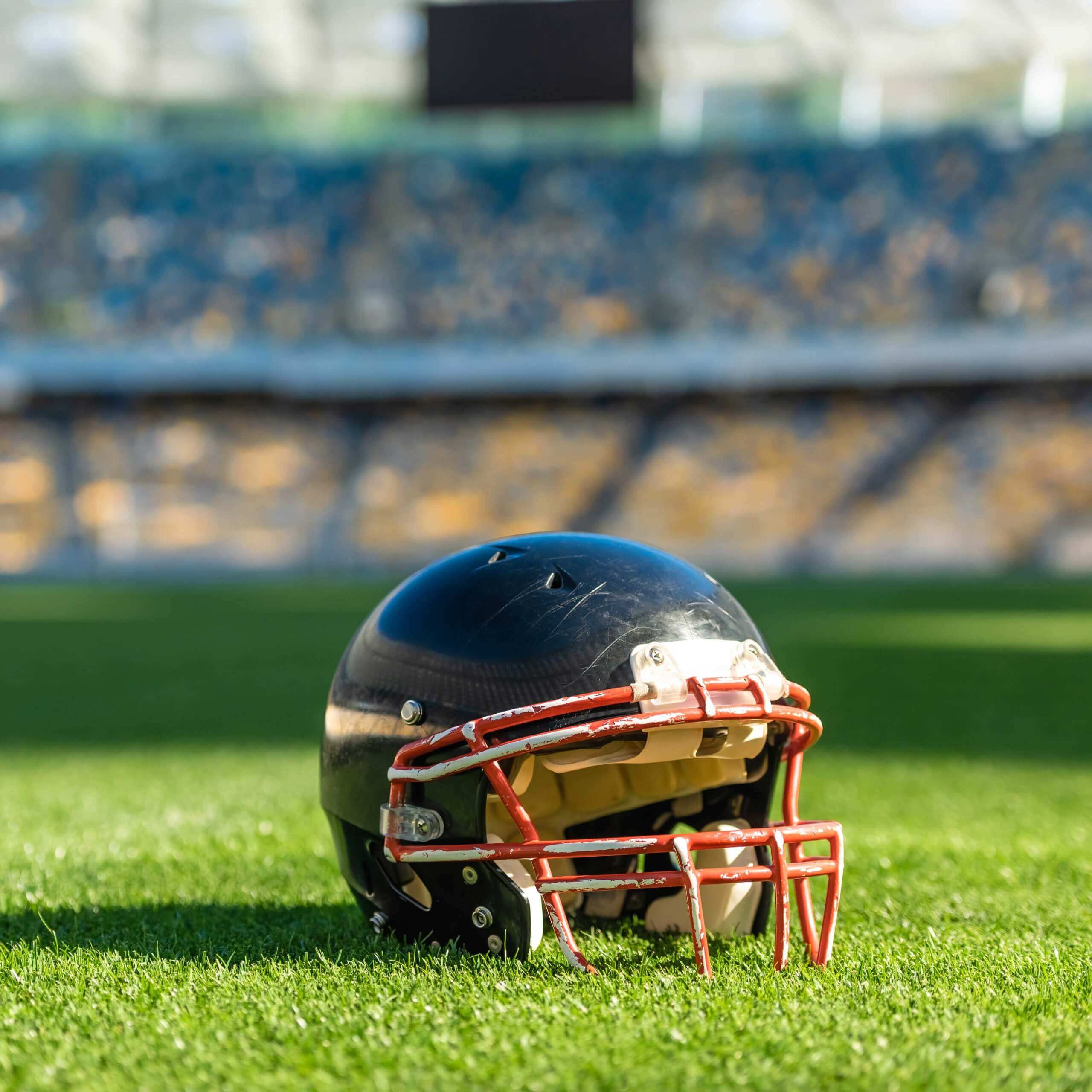Sponsorships and partnerships: An 8-point checklist for football clubs
30th July 2024
Our Commercial team’s handy checklist covers the key contractual provisions for football clubs to consider when entering into sponsorship and partnership agreements. Both should be carefully crafted to protect club interests whilst aligning with sponsor or partner expectations. A clear, mutually beneficial and legally watertight arrangement ensures that clubs can create winning partnerships on and off the pitch.

The importance of sponsorship and partnership arrangements with football clubs has dramatically increased in recent years.
Sponsorships not only generate substantial revenue for clubs but also provide sponsors with valuable exposure and association with one of the world’s most popular sports.
With a global audience of billions, football clubs offer an unparalleled platform for brands to enhance their marketing initiatives, if activated correctly.
Alongside the seemingly unstoppable rise in the numbers involved in player trading, Premier League sponsorship spend alone hit an all-time high of £1.35 billion for the 2023/24 season, highlighting the lucrative opportunities these deals present.
Additionally, the shift from traditional brand sponsors (financial services, airlines and automobile companies) to newer, digital-first sectors [1], necessitates an increasingly bespoke, flexible approach to legal provisions within these agreements.
In this article, we walk through a checklist of the key points for clubs to consider ahead of signing sponsorship or partnership deals [2].
1) Exclusivity
Sponsors typically seek to maximise the value of their association with clubs through exclusivity provisions.
Establishing the boundaries of exclusivity is likely to be one of the most lengthily negotiated elements of the agreement, whether that be duration, territory, or whether it is to be truly exclusive.
Clubs must decide if the sponsor will be the sole sponsor in their sector or brand category. Contractual clauses must be diligently drafted to prevent conflicts with products or services already agreed with current sponsors, and having an understanding of the arrangements with such sponsors can be invaluable, to ensure there is no overlap between them and a new arrangement.
Therefore, a careful balance must be struck, as any breach of an existing sponsorship agreement may ultimately lead to costly disputes.
2) Scope of rights
Clubs must clearly define the scope of rights granted within the agreement.
Sponsors will likely request clear visibility over what they will receive in return for their investment. The geographic reach of the sponsor’s brand should be specified, along with visibility on the number of matches or events, the exact locations on advertising boards, and the duration of logo visibility during broadcasts.
Brands may also wish to stipulate the placement and size of logos on kits and advertising materials (within the bounds of the competition organiser’s own rules, of course).
A front of shirt or sleeve placement continues to be the holy grail of uniform sponsorship (see further below).
However, sponsors and clubs are becoming more inventive in terms of expanding the rights on offer, with more joint-promotions and events becoming commonplace – see our release from last season for more detail on competitions, for example.
3) Fees
Often the most important part of the agreement for the parties, payment terms, dates and any fee structure must be clearly drafted (for the Premier League in particular, there is also the added complexity of complying with the rules governing associated party transactions and the stipulations as to fair market value).
Fees will often include any bonuses tied to the club’s performance. This may include reaching finals or placings in leagues.
Clubs should be aware that sponsors may request contingency clauses for fee reductions in cases of lower-than-expected performance (e.g. club relegation or failing to qualify for a tournament) or reduced stadium capacities.
Due to the ever-changing dynamics in the world of football, parties should also define any fees payable upon termination of the agreement.
Clear financial terms help manage expectations and ensure that both parties understand their financial commitments for the duration of the sponsorship.
4) Termination rights
A well-defined duration and clear termination rights are crucial in any sponsorship agreement. Robust termination clauses ensure that both parties are protected from unforeseen circumstances and can exit the agreement without severe financial repercussions.
Any agreement should specify the exact length of the contract and any conditions for renewal. These should cover scenarios such as legislative or regulatory changes (e.g. particularly in the current context of increasing restrictions on betting company sponsorships), incidents damaging the club’s reputation, or events that impact sponsor visibility (e.g. match rescheduling).
Increasingly, clubs are insisting on “morality” clauses for reputation protection. Such clauses may allow for termination in the event that either party’s reputation is significantly harmed.
5) Rights of pre-emption for renegotiating
Brands and sponsors may request that clubs agree to rights of pre-emption for renegotiating. Such provisions allow the existing sponsor the first opportunity to renew or extend the agreement after the agreed term ends.
Agreements often include an exclusive renewal negotiation period, restricting the club from entering into any further sponsorship agreements with competitors. For the benefit of the club, it is advisable to include additional provisions that stipulate no restriction on discussions that a club may have with third-parties, including competitors of the current sponsor. Whilst rights of pre-emption provide the sponsor with stability, it is important that the club retains some level of flexibility and a strategic awareness of the sponsorship market.
Any matching rights clauses should also be meticulously drafted to avoid any debate around who has been granted what. Clubs should ensure that “matching” any offer takes into account both the monetary offer, and the wider marketing terms.
This was highlighted in 2022 when New Balance fatally failed to match the terms of a rival offer from Nike for the sponsorship of Liverpool FC’s kit [3].
6) Use of intellectual property (IP)
The use of a club’s IP is one of the most objectively valuable aspects of the agreement. As with most of the provisions discussed herein, clubs should clearly specify the scope of use and which logos, trademarks, and images can be used.
Any use of IP other than as strictly set out in the agreement should typically be covered by way of an indemnity, which aims to protect (for more detail on this, see our article here) the club from financial losses related to any unauthorised use of their IP. Clubs may still require pre-approval for specific uses of the club’s logo, for example, to maintain brand integrity.
Investment in traditional brand sponsors declined by 20% from 2019/20 to 2023/24, whilst spend on technology and digital brands increased by over 300% [4]. In light of this shift, the club’s IP is likely to be used in more innovative and interactive ways – think virtual reality, personalised, user generated content, and more dynamic social media campaigns.
Agreements must therefore include rights and restrictions that can adapt to this shift, and leverage the strength of the sponsorship whilst protecting the integrity of the club’s IP.
7) Rights in respect of players
Players are key brand ambassadors for football clubs, and their involvement inevitability enhances a sponsorship’s value significantly. Any contractual provisions should help leverage player influence in elevating the sponsorship while respecting their individual rights and contracts.
Image rights must be considered, and clubs should carve out the use of any player imagery and specify the boundaries of the sponsor’s use for individual players according to the playing contract (and what has been further agreed in any image rights agreement).
Furthermore, as players may have their own individual sponsorship deals, it is worth considering what the players’ obligation is to the agreement e.g. how a player’s use of social media to promote those individual player sponsors may interact with the club’s agreement.
Clubs should be clear over their level of control of players’ social media activities, and agree on the expectation of the players’ support and involvement with the sponsor.
8) Rights in respect of kits
Subject to the competition organiser’s own rules governing sponsorship, sponsors will seek to have their logos prominently displayed on team kits as part of any kit sponsorship deal.
The front of shirt placement remains the most sought after, along with sleeves and training kits. Specific requirements regarding visibility and placement of any logo on club kits must be clearly defined.
Consideration as to what is camera-facing during matches and visibility in other media formats is paramount. The lifecycle of any shirt design must be taken into consideration and any potential design changes during the course of the agreement (particularly for teams who happen to change leagues from one season to the next).
Exclusivity is again relevant here – ensuring that the sponsor’s logo does not conflict with another on the kit.
Ticking off the list
Sponsorship agreements with football clubs are complex documents that require careful drafting to protect the interests of both parties and maximise the value of the sponsorship.
Sponsors are well aware that football clubs, particularly in the Premier League and EFL Championship, have a unique “always on” content cycle that provides sponsors with unrivalled exposure to a club’s, sometimes global, fanbase [5].
Ensuring the agreement is both watertight yet adaptable for use with other brands will help clubs stay ahead of the game, to secure and maintain lucrative deals in a competitive global market.
Although not exhaustive, working through the above checklist may help when considering these arrangements. If you have any queries about any of the points covered or would like to know more about our experience in respect of sponsorship or partnership agreements, please contact Jake or Kyran.
If you have any other sports or commercial-related queries, please contact a member of our Commercial Law team.
Explore more updates for football clubs in the pre-season edition of Beyond the Game, here.
[1] “The Premier League’s Shifting Brand Landscape,” SportQuake Blog, May 9, 2024, accessed June 23, 2024, https://www.sportquake.com/blog/2024/05/09/the-premier-leagues-shifting-brand-landscape/
[2] Although here we focus on football, these points are generally applicable to all sports clubs, and albeit there is a distinction between sponsors and partners, from hereon in we generally refer only to sponsorships for ease of reference.
[3] New Balance v Liverpool Football Club [2019] EWHC 2837 (Comm)
[4] “The Premier League’s Shifting Brand Landscape,” SportQuake Blog, May 9, 2024, accessed June 23, 2024, https://www.sportquake.com/blog/2024/05/09/the-premier-leagues-shifting-brand-landscape/
[5] Why are Brands Sponsoring in the 2023/24 Premier League? August 9, 2023 https://www.sportquake.com/blog/2023/08/09/why-are-brands-sponsoring-the-2023-24-premier-league/











